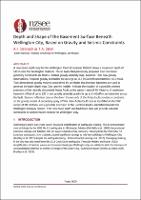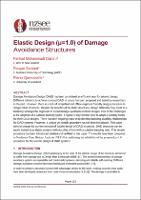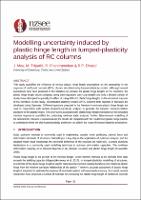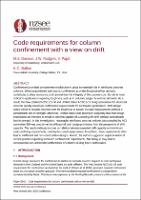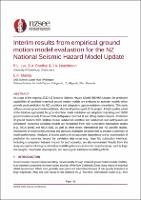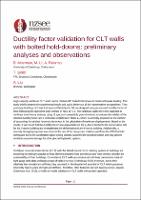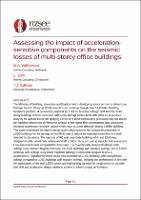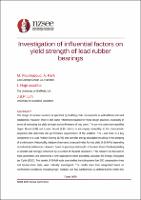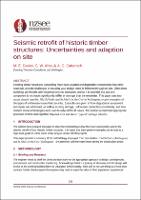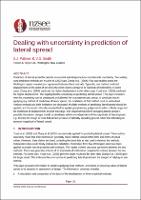Search
Now showing items 1-10 of 46
Depth and Shape of the Basement Surface Beneath Wellington City, Based on Gravity and Seismic Constraints
(New Zealand Society for Earthquake Engineering, 2022-04-27)
A new basin-depth map for the Wellington Central Business District shows a maximum depth of 540 m near the Wellington Stadium. This is twice that previously proposed. Our new basin geometry constraints are from a residual ...
Elastic Design (μ=1.0) of Damage Avoidance Structures
(New Zealand Society for Earthquake Engineering, 2022-04-27)
Damage Avoidance Design (DAD) has been considered an efficient way for seismic design. Different solutions to achieve a robust DAD structure has been proposed and tested by researchers in the past. However, there is a lack ...
Modelling uncertainty induced by plastic hinge length in lumped-plasticity analysis of RC columns
(New Zealand Society for Earthquake Engineering, 2022-04-27)
This study quantifies the influence of various plastic hinge length assumptions on the uncertainty in the response of reinforced concrete (RC) columns simulated using lumped plasticity models. Although several expressions ...
Code requirements for column confinement with a view on drift
(New Zealand Society for Earthquake Engineering, 2022-04-27)
Confinement provided by transverse reinforcement plays an essential role in reinforced concrete columns. When proportioned judiciously, confinement provides longitudinal bar restraint, contributes to shear resistance, and ...
Interim Results from empirical ground motion model evaluation for the NZ National Seismic Hazard Model Update
(New Zealand Society for Earthquake Engineering, 2022-04-27)
As a part of the ongoing 2022 NZ National Seismic Hazard Model (NSHM) Update, the predictive capabilities of candidate empirical ground motion models are evaluated to ascertain models which provide good prediction for NZ ...
Ductility factor validation for CLT walls with bolted hold-downs: preliminary analysis and observations
(New Zealand Society for Earthquake Engineering, 2022-04-27)
High-capacity cantilever CLT walls can be created with bolted hold-downs to resist earthquake loading. This study briefly presents the experimental results and cyclic behaviour of the representative test specimen. Then ...
Assessing the impact of acceleration-sensitive components on the seismic losses of multi-storey office buildings
(New Zealand Society for Earthquake Engineering, 2022-04-27)
The Ministry of Building, Innovation and Employment is developing advice on how to deliver Low Damage Seismic Design (LDSD) protection for buildings through their Tū Kahika: Building Resilience platform. A preliminary ...
Investigation of influential factors on yield strength of lead rubber bearings
(New Zealand Society for Earthquake Engineering, 2022-04-27)
The design of seismic isolators as specified by building code requirements is well defined and well established. However, there is still some refinement required for these design practices, especially in terms of estimating ...
Seismic retrofit of historic timber structures: Uncertainties and adaption on site
(New Zealand Society for Earthquake Engineering, 2022-04-27)
Existing timber structures, containing more hand-adapted and degradable components than other materials, provide challenges in ensuring your design intent is followed through on site. Often these buildings are flexible ...
Dealing with uncertainty in prediction of lateral spread
(New Zealand Society for Earthquake Engineering, 2022-04-27)
Prediction of lateral spread for seismic assessment and design includes considerable uncertainty. Two widely used prediction methods are Youd et al. (2002) and Zhang et al. (2004). Five case studies across the Wellington ...

